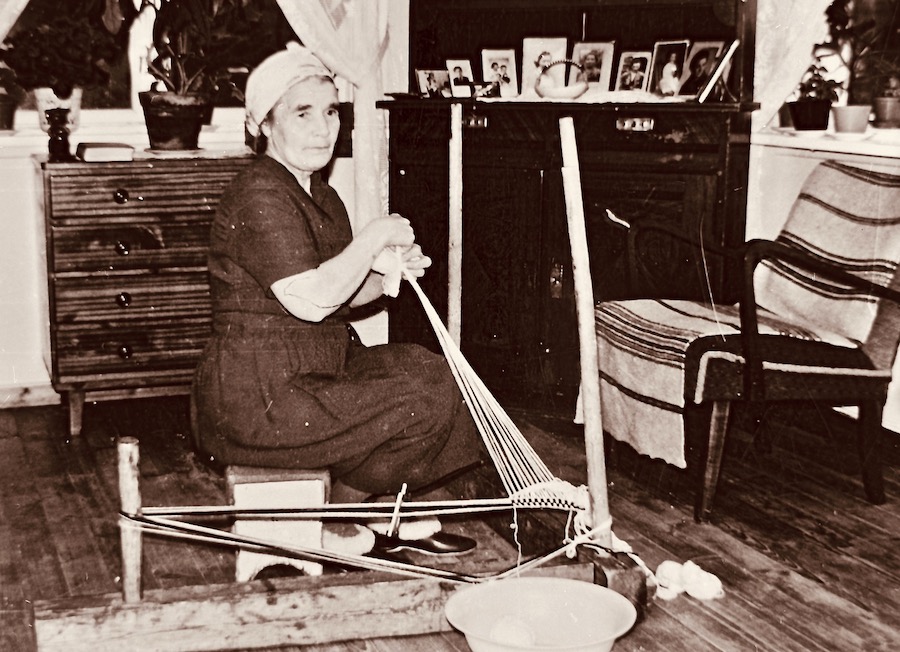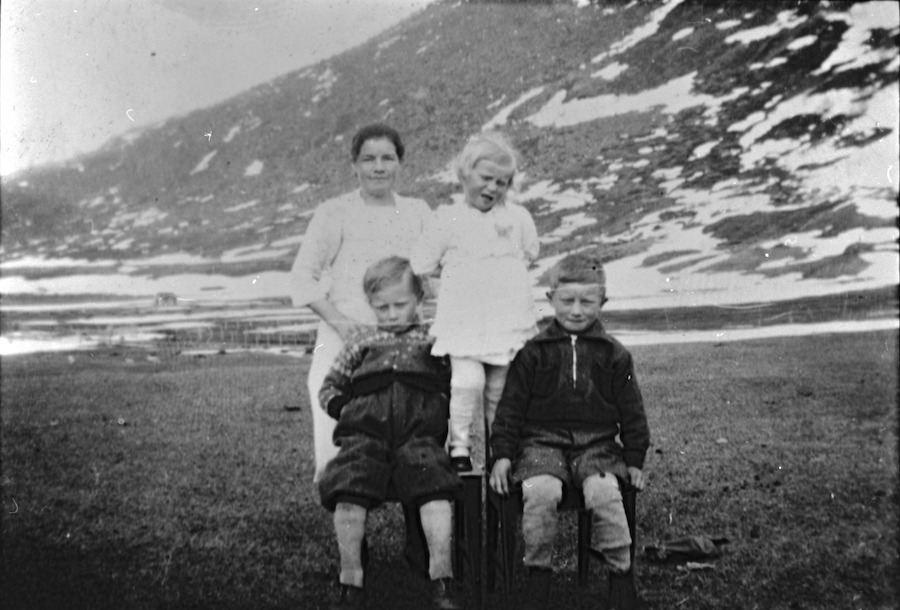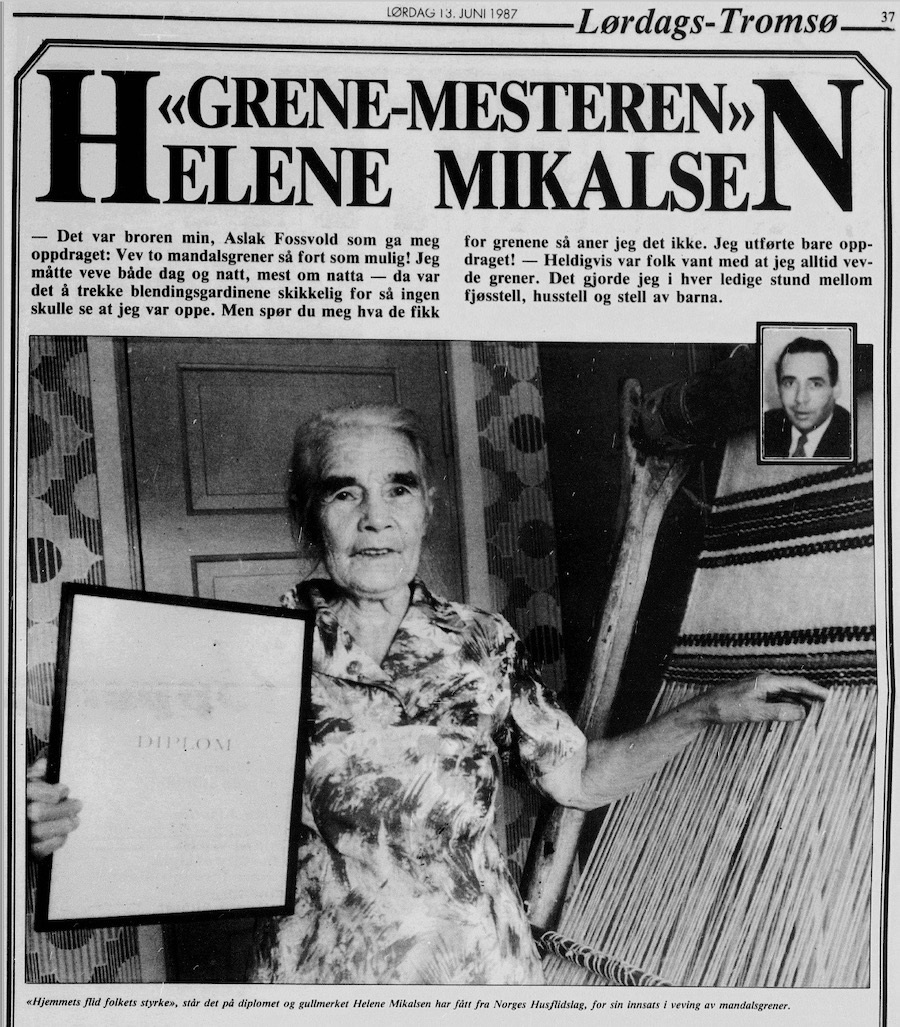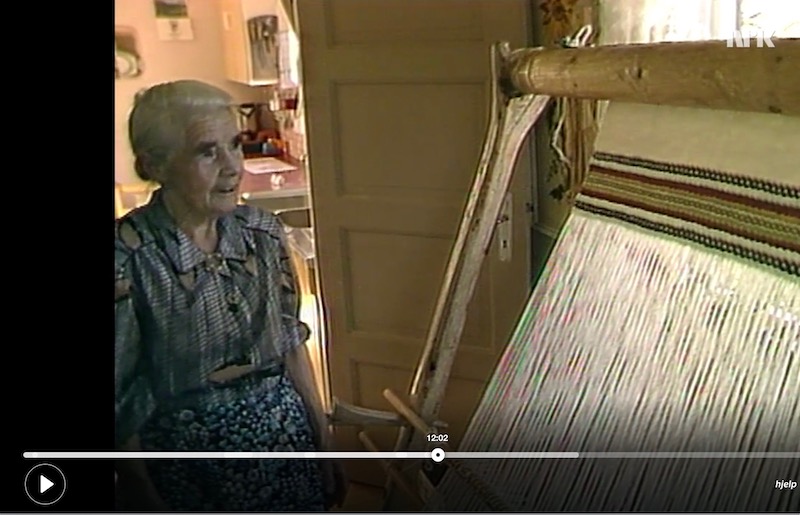
Helena Mikalsen. Photo: Nord-Troms museum.
Helena
Helena learned to weave at an early age, and since then she wove both day and night. She became a widow early in her life, and the income from the weaving became important for her and her little familiy. Helena was awarded an honorary award in gold for her work as a weaver.
Helene Aslaksen, g. Mikalsen, Manndalen / Olmmáivággi (1905- 1996)
In Helena’s childhood home, weaving was done on both flat and pile looms, and she learned this early. She married her Mikal, and they had three children in a few years. The man died of tuberculosis aged just 37. The youngest child was then only one year old.
To save the farm from forced auction, Helene had to sell her animals and place the two youngest children with aunts in the village for a period. It was not possible to run the farm alone with three small children. The eldest, five years old, became a good helper on the farm. Weaving and selling other handicrafts became necessary wages for Helena and her small family. “The branch weaving became my lifesaver”, said Helena herself in her older days.
Oh-yes, the days was not long enough, I had to take the night to help. I often wove until six in the morning. Then I lay down for a while before I got up and went to take care of the animals
Branches to Baalsrud
In the spring days of 1943, resistance fighter Jan Baalsrud was hiding in the valley in Manndalen. The village’s men, led by Helena’s brother Aslak Fossvoll, wanted to help Baalsrud to be transported to Sweden. In order to get the reindeer-herding Sami to help Baalsrud across the border, they had to have two large Manndals branches. Aslak asked his sister Helena, and she began to weave. She wove on the branches for two days, night and day. At night, she hung clothes over the windows, so no one would suspect what she was doing.
Before the evacuation, valuable objects were buried where there was sandy ground, including Helena’s looms. Helena and the children were evacuated and lived in Svolvær for a year. After the war, the looms were found again, and Helena could continue weaving.
Wool deliveries
Helena was for several years an intermediary for Manndalen’s deliveries of wool. The wool was sent to spinning mills in the south with the help of Helena. She was responsible for the finances and in her house there was an intermediate storage of the wool.
In the 60s, Helena was one of the women who started the Husfliden in Manndalen. The branch weaving had gained interest from the outside world , and the women in Husfliden wanted their traditions to benefit the village. Helena was in the first board as an accountant. In 1971, Helena was honored by Norway’s Husflidslag with a gold medal of honor for her branch weaving.
My branches would fill a large room if they were gathered in one place. But now they are spread over a large area, both at home and abroad, including in America.
Helena is remembered and referred to as a working hero. She was good with animals, ran the farm alone and saved her family thanks to her skills at the loom.





